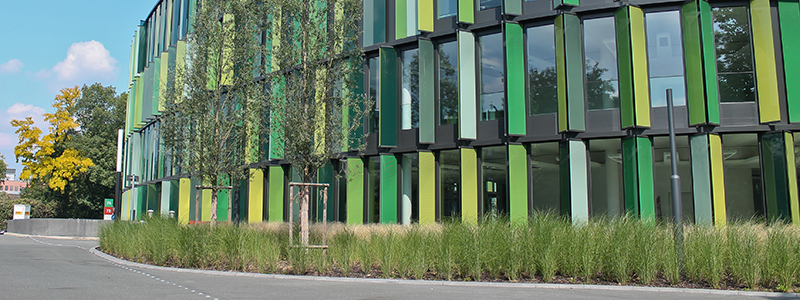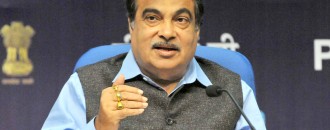
Tech Minister calls for low cost & green concepts to fill up demand-supply gap
The Dollar Business Bureau  The Union Minister for Science and Technology, Harsh Vardhan, on Tuesday, called upon the Indian technologists and scientists working on development of low cost building and structural materials, to develop affordable and sustainable solutions. Addressing the personnel of the CSIR-Structural Engineering Research Centre (CSIR-SERC), a Laboratory of the Council for Scientific and Industrial Research (CSIR), the Minister urged the structural engineers to bear the responsibility of implementing Government of India’s roof for all plan in an affordable manner. In this regard, the Minister said that there is a need to use low cost technologies for rapidly filling up the demand-supply deficit and urged for the implementation of the same in the fulfillment of Prime Minister, Narendra Modi’s dream of a roof above every head by 2022. Stating that the construction technologies, high science products and specialized services developed by SERC would form an essential component for the PM’s project, the Minister urged the community to develop affordable and safe products. The Minister further urged the scientists’ community to pursue new research areas capable of meeting the country’s needs and asked them to take the country ahead in select technology domains related to the activities of the Institute. The Minister called upon the entrepreneurs to focus on using renewable and green materials or materials of Indian origin, including materials based on nano-technology, which have minimum carbon foot print and are low-cost and sustainable. Prior to this on Monday, announcing a breakthrough in scientific processes for the leather sector, the Minister had also lauded Central Leather Research Institute (CLRI), a unit of CSIR, for developing ‘green technology’ for leather tanning. The CLRI has developed a biodegradable dispersing agent which enables the chrome tanning of leather with just half the normal usage. This development by CLRI ensures the saving of water by 15 million litres per day in the Indian leather sector alone and an estimated 200 million litres of water could be saved per day, if this revolutionary technology is implemented in a global-level application. Lauding the CLRI’s development, the Minister said this development aimed at multiple benefits relating to in-process abatement of sewage problem will help in huge water conservation, along with time economy and is also cost-saving. CLRI has succeeded in fostering an ‘enzymatic intervention’ to complete in just 30 minutes the enabled fibre opening process, which till now has taken up to 72 hours. This is definitely a good news for the Prime Minister’s ‘Make in India’ agenda and this ensures India’s leather and leather goods industry is on the verge of unique global competitiveness. While appreciating the CSIR for forming a base for industrial research in meeting the ‘Make in India’ goals, the Minister called the institute to provide high science based technologies to the medium, small and micro enterprises and ensure the same to the common man in an affordable and sustainable manner.
The Union Minister for Science and Technology, Harsh Vardhan, on Tuesday, called upon the Indian technologists and scientists working on development of low cost building and structural materials, to develop affordable and sustainable solutions. Addressing the personnel of the CSIR-Structural Engineering Research Centre (CSIR-SERC), a Laboratory of the Council for Scientific and Industrial Research (CSIR), the Minister urged the structural engineers to bear the responsibility of implementing Government of India’s roof for all plan in an affordable manner. In this regard, the Minister said that there is a need to use low cost technologies for rapidly filling up the demand-supply deficit and urged for the implementation of the same in the fulfillment of Prime Minister, Narendra Modi’s dream of a roof above every head by 2022. Stating that the construction technologies, high science products and specialized services developed by SERC would form an essential component for the PM’s project, the Minister urged the community to develop affordable and safe products. The Minister further urged the scientists’ community to pursue new research areas capable of meeting the country’s needs and asked them to take the country ahead in select technology domains related to the activities of the Institute. The Minister called upon the entrepreneurs to focus on using renewable and green materials or materials of Indian origin, including materials based on nano-technology, which have minimum carbon foot print and are low-cost and sustainable. Prior to this on Monday, announcing a breakthrough in scientific processes for the leather sector, the Minister had also lauded Central Leather Research Institute (CLRI), a unit of CSIR, for developing ‘green technology’ for leather tanning. The CLRI has developed a biodegradable dispersing agent which enables the chrome tanning of leather with just half the normal usage. This development by CLRI ensures the saving of water by 15 million litres per day in the Indian leather sector alone and an estimated 200 million litres of water could be saved per day, if this revolutionary technology is implemented in a global-level application. Lauding the CLRI’s development, the Minister said this development aimed at multiple benefits relating to in-process abatement of sewage problem will help in huge water conservation, along with time economy and is also cost-saving. CLRI has succeeded in fostering an ‘enzymatic intervention’ to complete in just 30 minutes the enabled fibre opening process, which till now has taken up to 72 hours. This is definitely a good news for the Prime Minister’s ‘Make in India’ agenda and this ensures India’s leather and leather goods industry is on the verge of unique global competitiveness. While appreciating the CSIR for forming a base for industrial research in meeting the ‘Make in India’ goals, the Minister called the institute to provide high science based technologies to the medium, small and micro enterprises and ensure the same to the common man in an affordable and sustainable manner.
This article was published on March 24, 2015.






 to success.
to success.